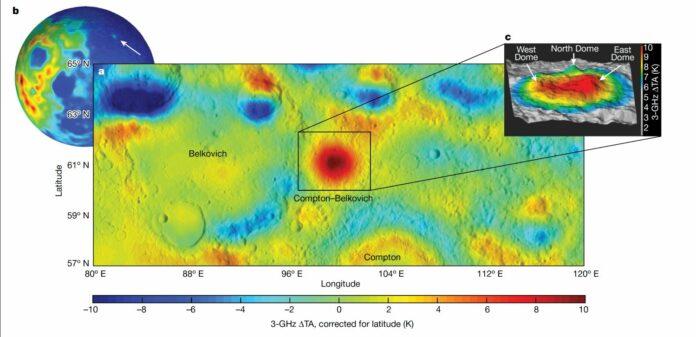In magmatic systems, multistage melting and fractionation are necessary to produce granitic compositions, raising the concentration of radiogenic components. On Earth, these processes are aided by plate tectonics and abundant water, promoting remelting. Small granite samples have been discovered on the Moon, although these drivers aren’t there. However, their origin and the size of the systems they represent need to be clarified.
A large granite formation was found below the surface of the Moon, and it is believed that it was created by the cooling of molten lava that fuelled a volcano or volcanoes that erupted at the beginning of the Moon’s history, maybe as long as 3.5 billion years ago.
Compton-Belkovich, a rumored volcanic structure on the Moon, was subjected to heat measurements using microwave frequency data. The scientists utilized data to determine that a concentration of radioactive elements that can only be found in granite on the Moon is what is generating the heat beneath the surface.
Matthew Siegler, an SMU research professor and research scientist with the Planetary Science Institute, said, “If you don’t have water, it takes extreme situations to make granite. So, here’s this system with no water and no plate tectonics – but you have granite. Was there water on the Moon – at least in this one spot? Or was it just especially hot?”
Data for the study was obtained from public data released from two Chinese lunar orbiters, Chang’E-1 in 2010 and Chang’E-2 in 2012, carrying four-channel microwave radiometer instruments.
Journal Reference:
- Siegler, M.A., Feng, J., Lehman-Franco, K. et al. Remote detection of a lunar granitic batholith at Compton–Belkovich. Nature (2023). DOI: 10.1038/s41586-023-06183-5
